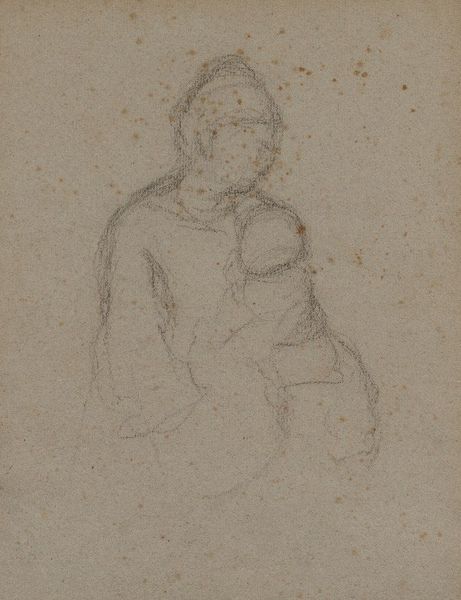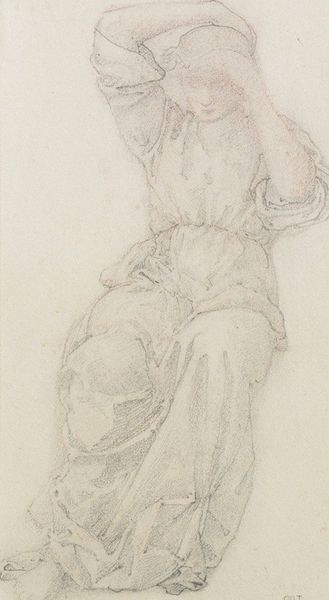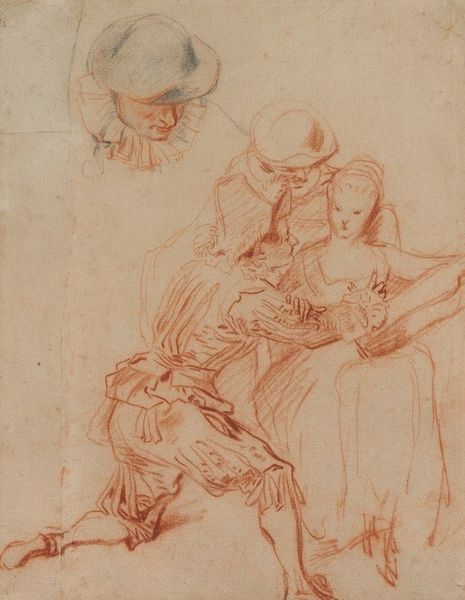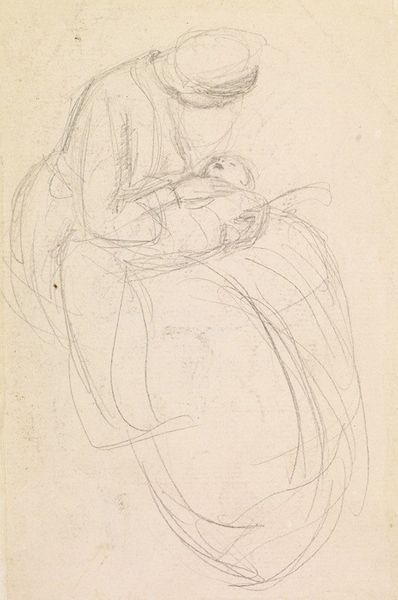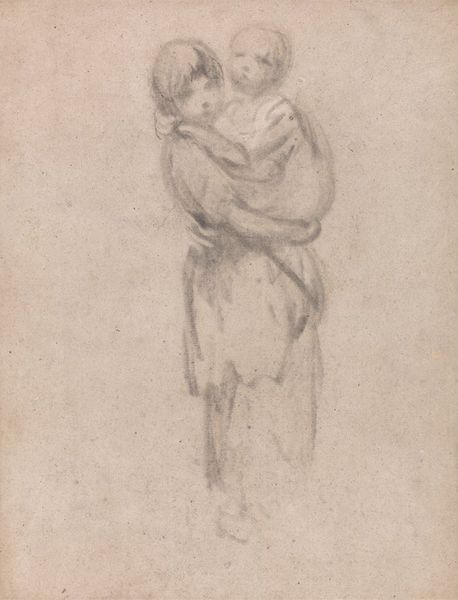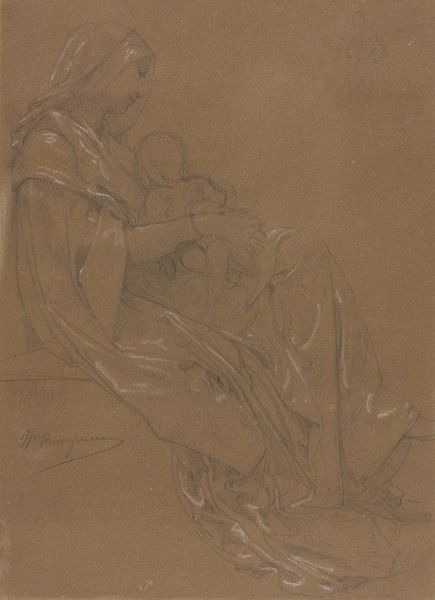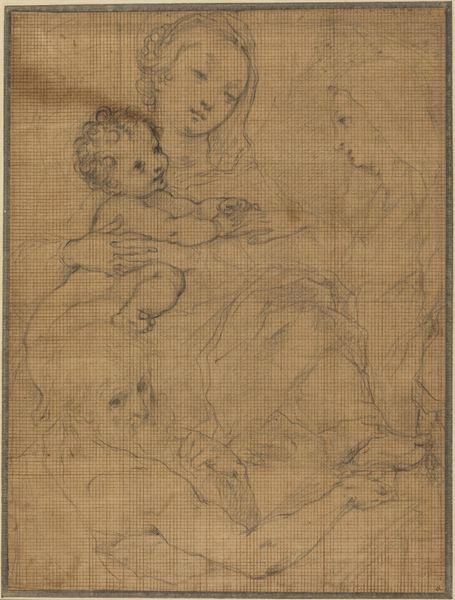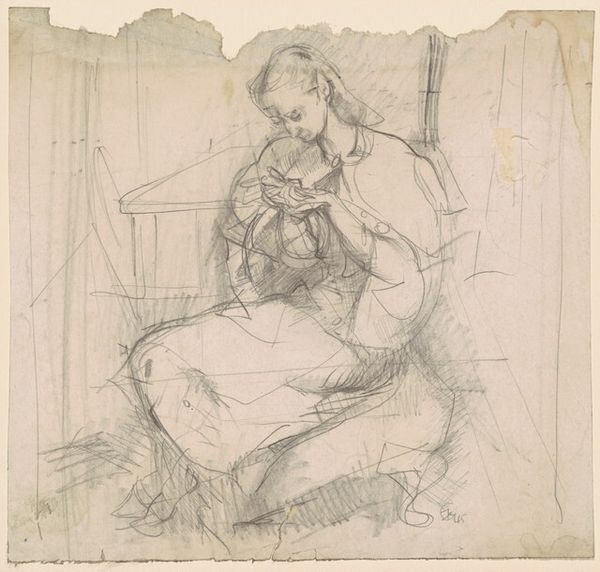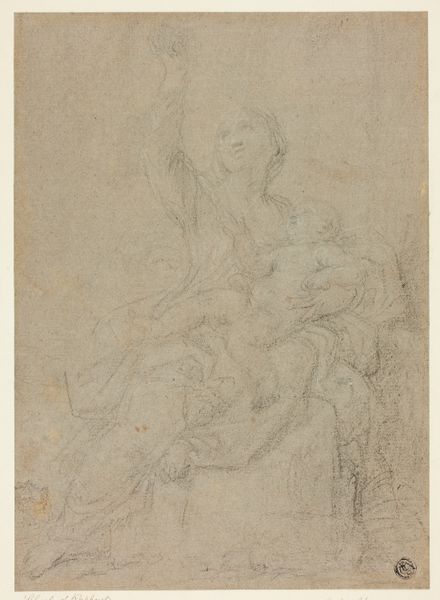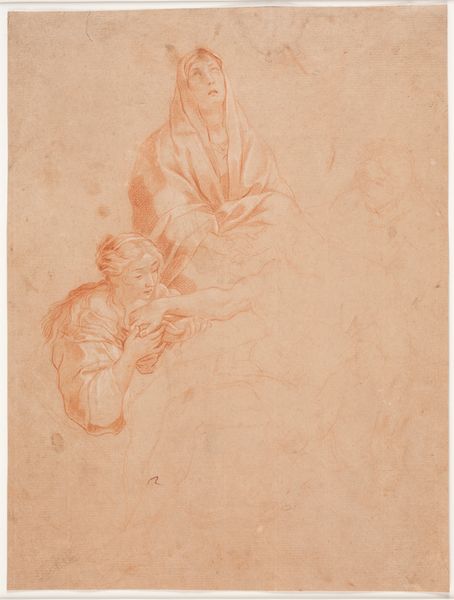
drawing, paper, pencil
#
portrait
#
drawing
#
narrative-art
#
charcoal drawing
#
figuration
#
paper
#
pencil drawing
#
pencil
#
italian-renaissance
Copyright: Public Domain: Artvee
Curator: Guido Reni’s "Nativity", dating from about 1640-1642, is a tender sketch rendered in pencil on paper. What strikes you initially about this study? Editor: The sheer gentleness. Despite the medium's austerity, it's filled with warmth. It reminds me of a lullaby, softly hummed in a quiet room. Curator: That's insightful. The composition is carefully arranged, almost like a pyramid, drawing your eye directly to the figures. The lines, though faint, articulate the folds of her garments, lending weight and structure to the subject. What can we say of its inherent symbolic worth? Editor: Well, Nativity scenes are saturated with symbolism, naturally. Mary embodies maternal love, of course, but also strength and resilience. The child represents innocence and hope. Together, it's a potent image of new beginnings. Her protective posture tells volumes about their bond, doesn't it? Curator: Precisely. And, as the mother gazes downward, we perceive the implicit prophecy of their bond and of human history, a prefiguring of earthly concerns through masterful employment of the pencil on the paper surface. Reni's adept handling of light and shadow, even in this preparatory form, subtly elevates the scene. Editor: The Renaissance was so keyed into religious depictions like this; images carried enormous cultural power. This humble sketch still resonates so powerfully even after all these centuries; such deeply ingrained motifs echo our universal notions about family and origins. Curator: An observation well worth heeding! Thinking on it, it really speaks to Reni's ability to imbue even the simplest of drawings with profound emotion and timeless elegance. Editor: Yes, a testament to how a simple medium, combined with iconic imagery, can unlock a depth of shared human understanding.
Comments
No comments
Be the first to comment and join the conversation on the ultimate creative platform.
